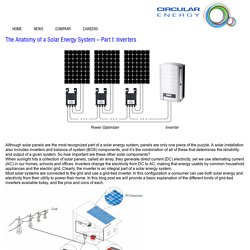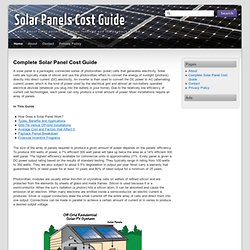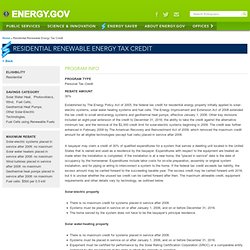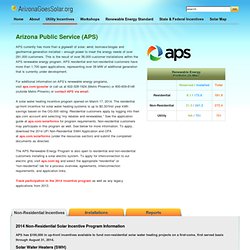

Metal Roofing Material. The Anatomy of a Solar Energy System – Part I: Inverters. The Anatomy of a Solar Energy System – Part I: Inverters Although solar panels are the most recognized part of a solar energy system, panels are only one piece of the puzzle.

A solar installation also includes inverters and balance of system (BOS) components, and it’s the combination of all of these that determines the reliability and output of a given system. So how important are these other solar components? When sunlight hits a collection of solar panels, called an array, they generate direct current (DC) electricity, yet we use alternating current (AC) in our homes, schools and offices. Inverters change the electricity from DC to AC, making that energy usable by common household appliances and the electric grid. Most solar systems are connected to the grid and use a grid-tied inverter. There are three main types of grid-tied inverters: central, micro and DC optimizer. Central inverter: the proven technology that has been used for decades. Central Inverters Source: enecsys4 Pros: Cons: Track frequent flyer reward programs and plan your travel.
Arizona Solar Power for your house - rebates, tax credits, savings. Arizona Solar Rebates and Incentives. Information, Prices and Calculator. A solar panel is a packaged, connected series of photovoltaic (solar) cells that generates electricity.

Solar cells are typically made of silicon and use the photovoltaic effect to convert the energy of sunlight (photons) directly into direct current (DC) electricity. An inverter is then used to convert the DC power to AC (alternating current) power, which is the kind of power used by the electrical grid and almost all non-battery operated electrical devices (whatever you plug into the outlets in your home). Due to the relatively low efficiency of current cell technologies, each panel can only produce a small amount of power. Most installations require an array of panels. In This Guide The size of the array of panels required to produce a given amount of power depends on the panels’ efficiency. Photovoltaic modules are usually either thin-film or crystalline cells on wafers of refined silicon and are protected from the elements by sheets of glass and metal frames.
Statistics. Residential Renewable Energy Tax Credit. Established by The Energy Policy Act of 2005, the federal tax credit for residential energy property initially applied to solar-electric systems, solar water heating systems and fuel cells.

The Energy Improvement and Extension Act of 2008 extended the tax credit to small wind-energy systems and geothermal heat pumps, effective January 1, 2008. Other key revisions included an eight-year extension of the credit to December 31, 2016; the ability to take the credit against the alternative minimum tax; and the removal of the $2,000 credit limit for solar-electric systems beginning in 2009. The credit was further enhanced in February 2009 by The American Recovery and Reinvestment Act of 2009, which removed the maximum credit amount for all eligible technologies (except fuel cells) placed in service after 2008.
Solar-electric property Solar water-heating property Fuel cell property Small wind-energy property Geothermal heat pumps. DSIRE: Incentives in AZ : Arizona Homeowner Incentives for Renewable Energy. Disclaimer: The information presented on the DSIRE web site provides an unofficial overview of financial incentives and other policies.

It does not constitute professional tax advice or other professional financial guidance, and it should not be used as the only source of information when making purchasing decisions, investment decisions or tax decisions, or when executing other binding agreements. Please refer to the individual contact provided below each summary to verify that a specific financial incentive or other policy applies to your project. While the DSIRE staff strives to provide the best information possible, the DSIRE staff, the N.C. Solar Center, N.C. State University and the Interstate Renewable Energy Council, Inc. make no representations or warranties, either express or implied, concerning the accuracy, completeness, reliability or suitability of the information. Arizona Goes Solar > Utility Incentives > Arizona Public Service.
2014 Non-Residential Solar Incentive Program Information APS has $100,000 in up-front incentives available to fund non-residential solar water heating projects on a first-come, first served basis through August 31, 2014.

Solar Water Heaters (SWH) Solar water heaters are a cost-effective way to use solar power at your business's facilities. And, unlike other energy sources that may increase cost over time, the sun's energy is free and renewable. Solar water heating is a clean, cost-effective way to heat your facility’s water. Solar Water Heaters have a collector on the building’s roof, which catches sunlight and warms the water inside the system. Terms & Conditions: The up-front incentive for Solar Water Heaters is up to $0.30/first year kWh savings based on the OG-100 rating for larger systems. Incentives are limited and are awarded on a first-come, first-served basis. APS Renewable Energy Rebates are subject to change and funding availability.